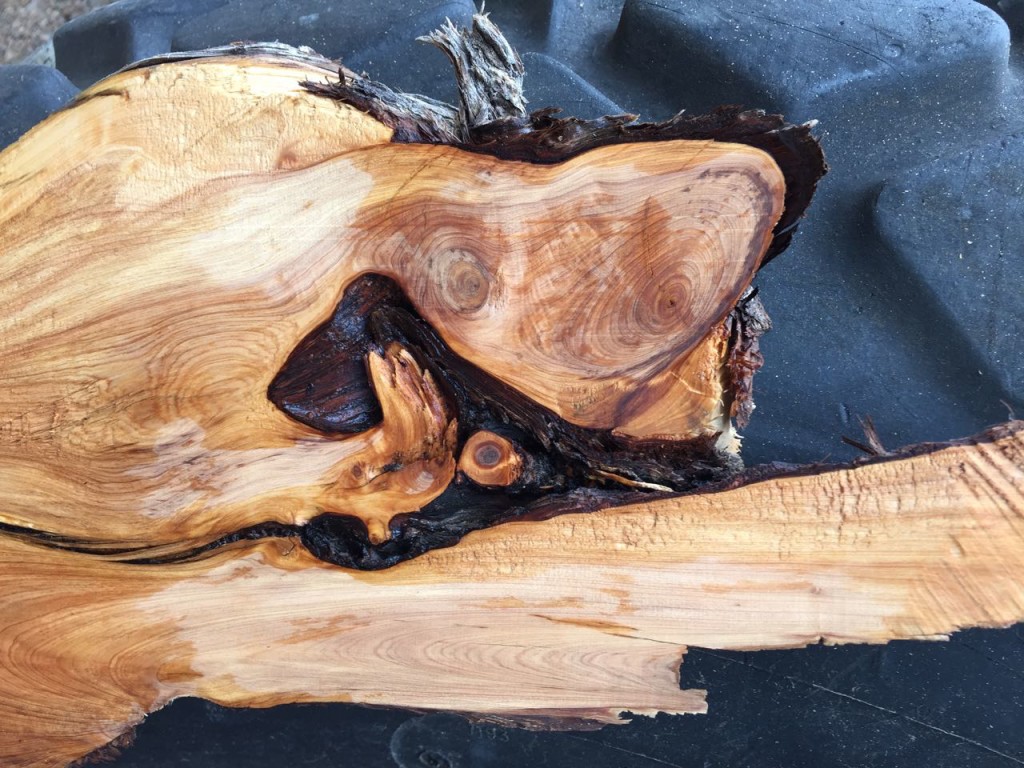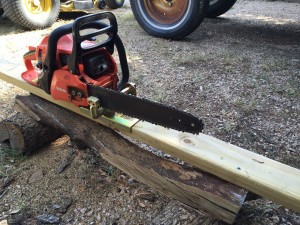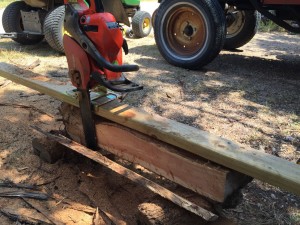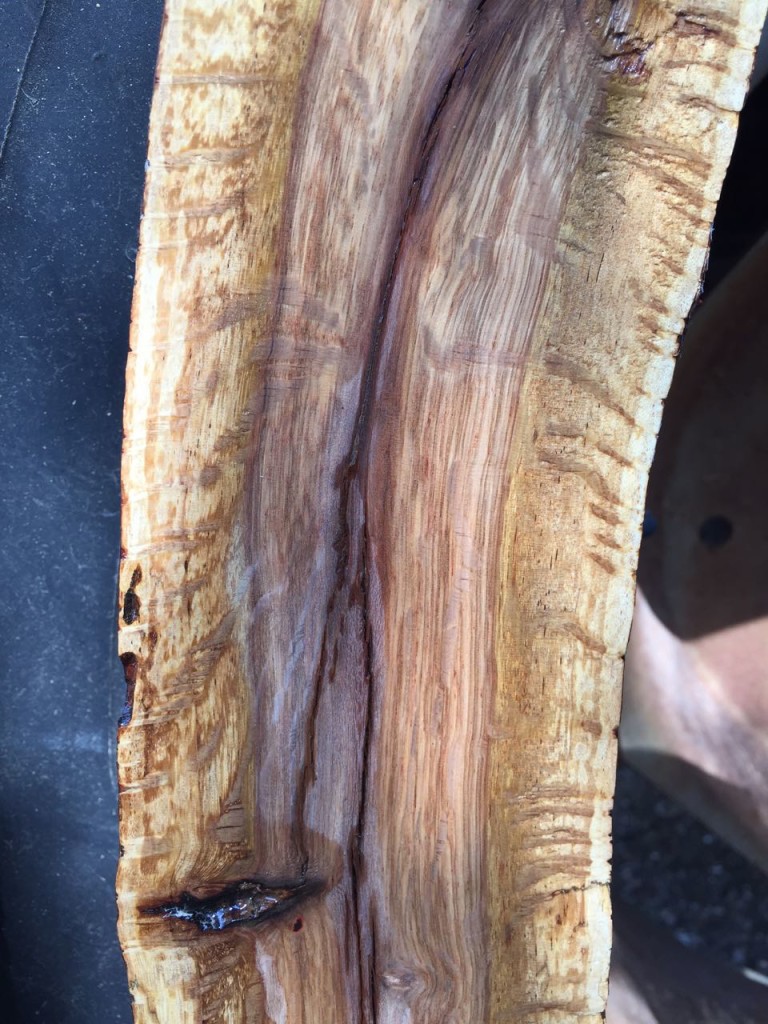Chainsaws and Micro Mills
We live in the woods. Live Oak and “Cedar” (a species of Juniper). There are acres of trees of all sizes and shapes. Over time, I’ve admired the beautiful work done by artists who use the idiosyncratic shapes of natural wood to make art and furniture pieces. Like puzzles, they assemble naturally occurring shapes to create interesting, useful items. They also “slab” larger logs into “cants” (sawmill terms here) to expose the beautiful grain within. I’ve always enjoyed the idea of using what occurs naturally on our place to make things, and decided to start after learning about “micro sawmills“. By adding a little extra hardware to a normal chainsaw, these devices make it possible to make straight, even cuts on irregularly-shaped logs — turning them into lumber that can be worked with common tools. An order to Amazon, and another to Bailey’s, and I was in business.
The first one to arrive was the Haddon “Lumbermaker”. It adds a pivoting guide or “shoe” by attaching to the bar of any chainsaw. A straight 2 x 4 or 2 x 6 is then attached to the log, and the shoe guides the chainsaw in a straight line by following the attached lumber.
I broke into the box, and discovered a simple steel tool, a cloth bag of small parts and a photocopied instruction book. Attaching the Lumbermaker to the chainsaw bar was easy with the included set screws and allen wrench, but a little reading made it clear that more complex cuts were possible than I expected. We’ll study those advanced techniques a little later. Looking around the place, I then found a live oak and cedar log that would make good practice candidates. A couple of scrap logs were notched to hold the work. Next, I found a straight 2×4, moved the cedar log onto the sawhorses, and attached the 2 x 4 to the log with wood screws. Ready for the first cut!
Cutting was pretty easy once I got used to letting the chainsaw do the work. I have a little peashooter chainsaw (30.5 cc), and it didn’t cut fast, but it wasn’t hard either. Most micro sawmill advice on the ‘net recommends at least a 70 cc motor — so I guess I’ll have to buy another chain saw. Darn. Nevertheless, the result is amazing. Exposing the interior of a cedar log is always full of surprises, and the wood grain is surprisingly attractive in spite of its unremarkable exterior appearance. It’s colorful too. I’ve seen examples of color in sawn cedar that range from blonde (almost white) through rust, reds, browns, and even purple. It’s also a fairly hard wood.
A couple of years ago I bought a DeWalt planer. It wasn’t very expensive, and handles large wood. After making several cedar and live oak slabs. it was time for planing. The slabs were not the same thickness from end to end, and I also wanted to see how the sawn wood looked after smoothing. Pretty great. The pic at the top of this post shows a planed cedar board, and an example of live oak is below. I’ll need some more practice, but I can see possibilities. The second micro mill, the Granberg “Alaskan Sawmill” arrived today. This is going to be fun.





Pingback:From Logs to Lumber – Jim Kerkhoff
Pingback:The Shed Roof — Storing Lumber in the Shop | Roy Creek Ranch